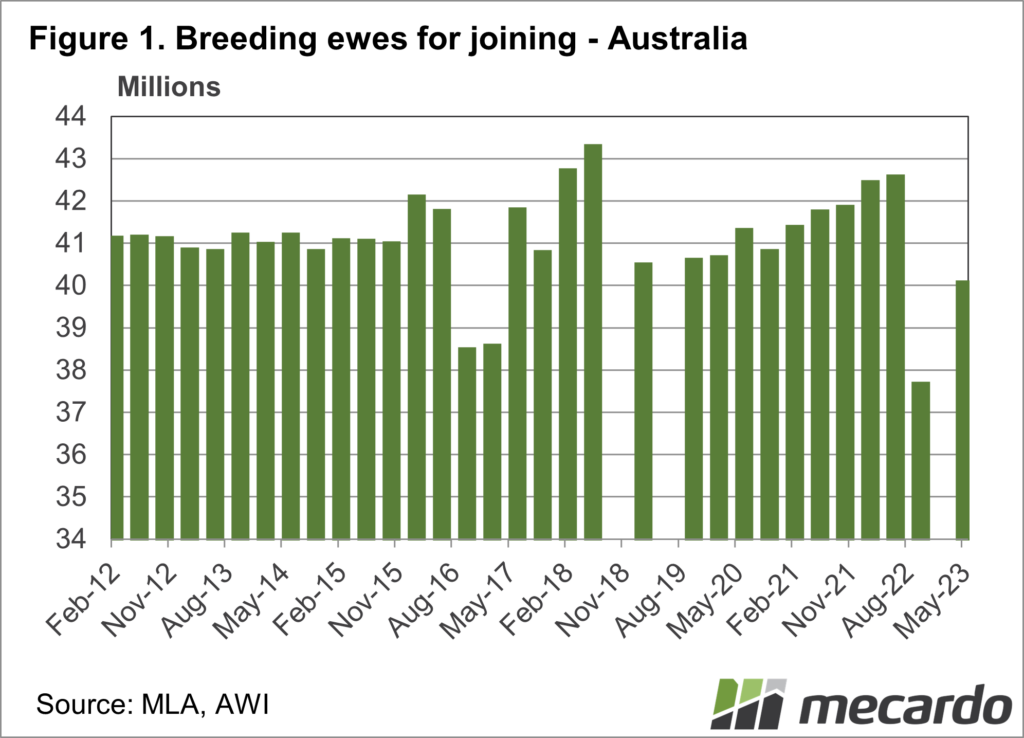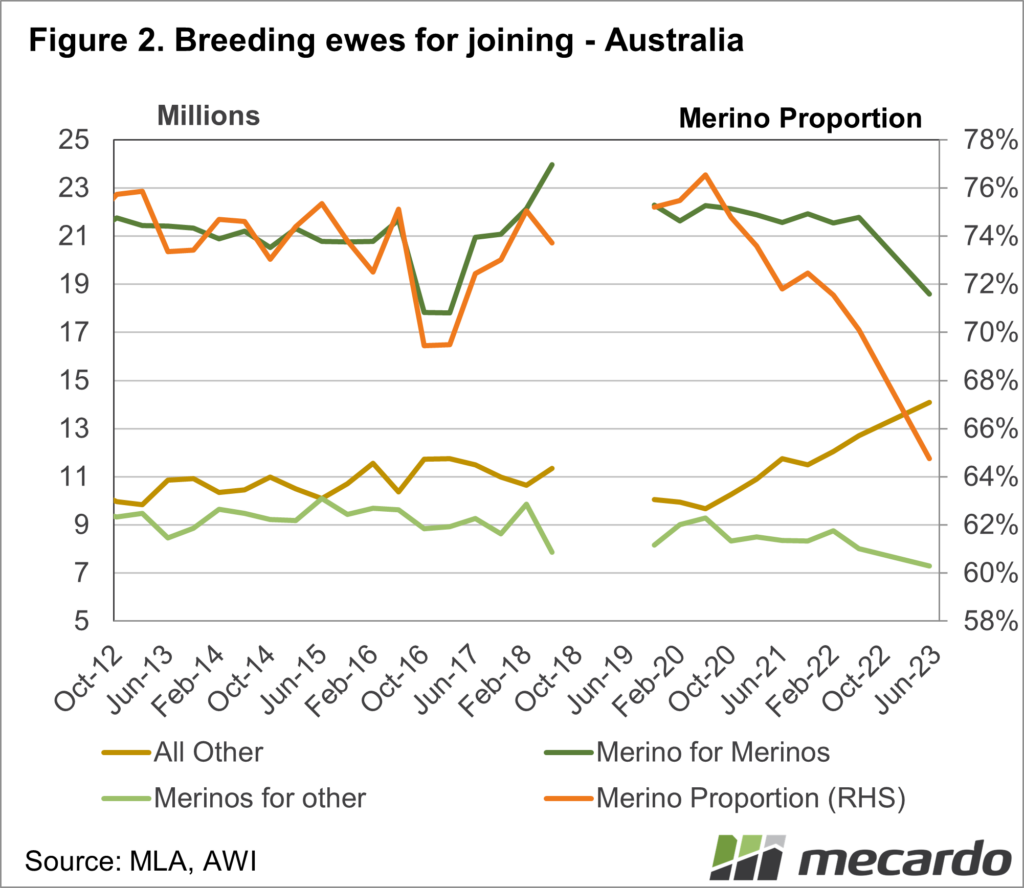The data from the Meat and Livestock Australia (MLA) and Australian Wool Innovation (AWI) Sheep Producer Intentions Survey (SPIS) for May was released earlier in the month. The main thing we like to take out of the survey is flock structure and potential impacts on lamb and wool supply. The trend out of merinos and into meat sheep seems to be speeding up.
Getting farmers to fill out surveys, and then making sense of the data is inherently difficult. Interpreting the reports and finding trends is also challenging, with report formats changing with survey providers. The SPIS has historically been conducted in June but has shifted to May this year.
Regardless of all this, we think we found some ‘apples with apples’ numbers in the joining intention for the upcoming season numbers, and it provides some interesting analysis, with some implications for markets.
Figure 1 shows what used to be the breeding ewes on hand, but for May 2023 it is breeding ewes for joining. The ‘Breeding Ewes on Hand’ number in the survey is 46.1 million head, but it includes ewe lambs which may not be joined this year. Historically the breeding ewes on hand have been ewes that are to be joined this year (we think). This number is just under 40 million head.
Figure 1 shows a 6% decrease in ewes being joined this year. Quite a significant shift, and the lowest number since February 2017 if we discount the strange outlier of October 2022. The number of breeding ewes for joining number seems low, but it’s the break up of breeds that is most interesting.
Figure 2 shows us the number of Merinos to be joined to Merinos, Merinos to another breed and ‘other’ breeds, which includes first cross and meat breeds.
Compared to June 2022, the total Merino ewes to be joined are down 13%. Merinos for Merinos are down 14.6% and Merinos for ‘other’ Rams are down 9%.
‘Other’ ewe breeds are much higher, up 11% on June 2022 to 14 million head. This is an extra 1.3 million head of ‘other’ ewes, partly at the expense of merinos. Merinos also seem to have gone unreplaced, another reason to be wary of these numbers.
What does it mean?
MLA’s Sheep Industry Projections have been released today which might shed some more light on sheep numbers, but the survey data paints a depressing picture for Merinos. We should remember these numbers were also set before the latest wool market declines, so despite falling lamb and sheepmeat prices, the trend out of Merinos might continue.
Have any questions or comments?
Key Points
- The number of Merino ewes for joining continued to decline.
- Meat sheep ewe numbers continue to grow.
- MLA/AWI Sheepmeat Producer Intentions Survey data recorded prior to the recent wool market decline.
Click on figure to expand
Click on figure to expand. Break in data due to a gap in survey production.
Data sources: MLA, AWI, Mecardo














